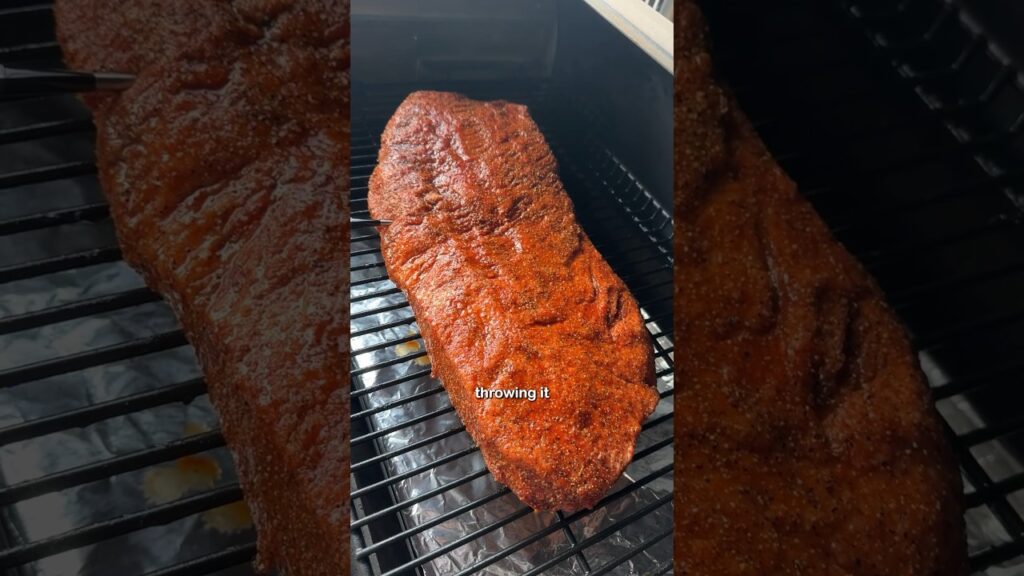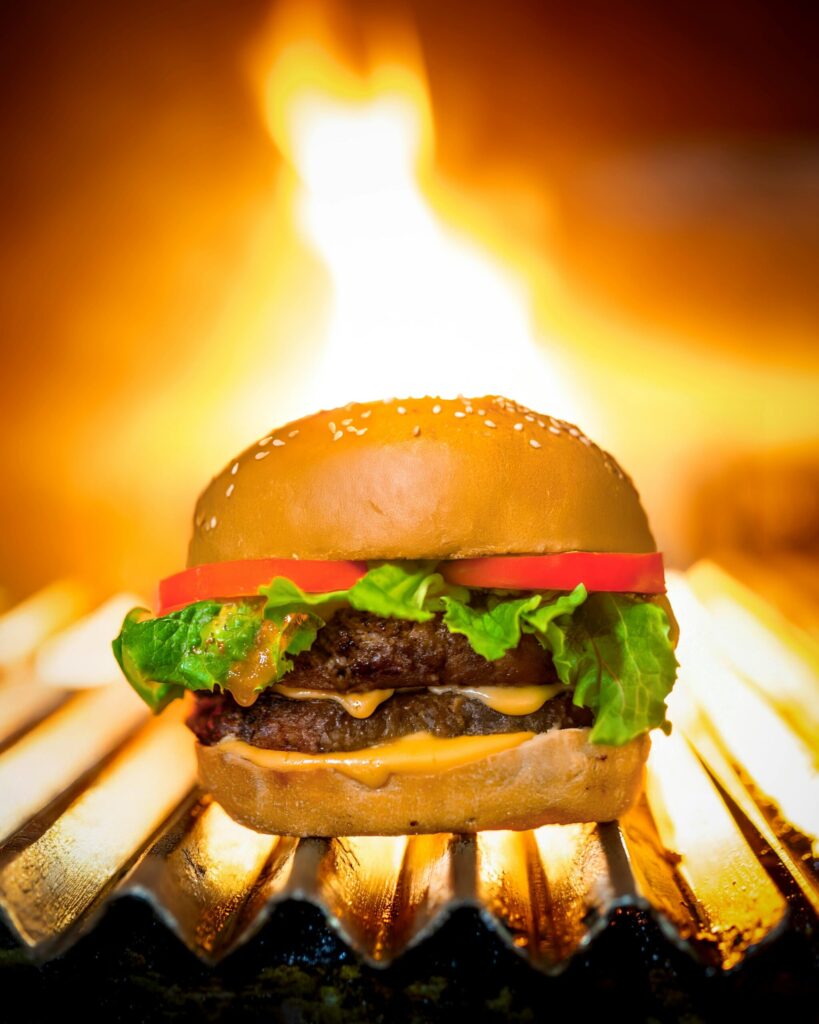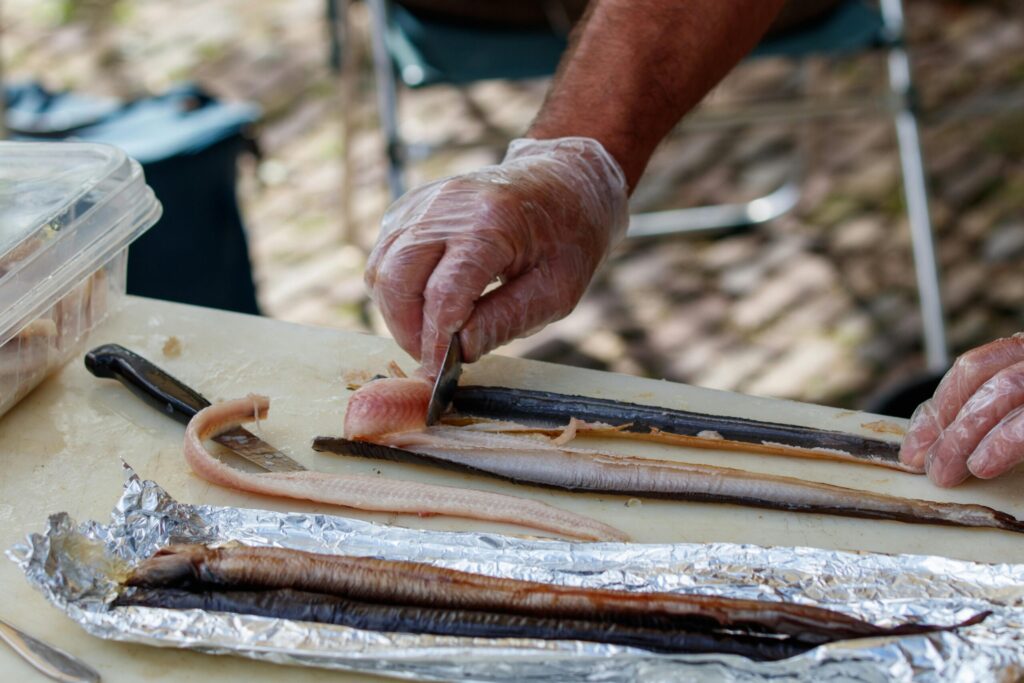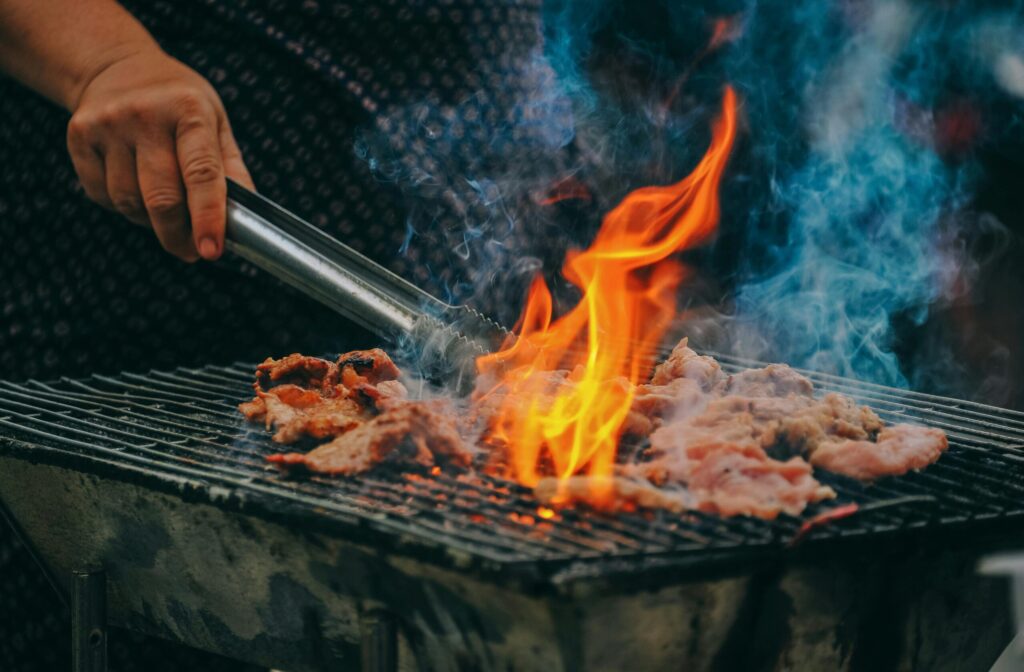Meemaw’s Famous Brisket Recipe by Lisa Nguyen delivers a sweet-savory crust from brown sugar, smoked paprika and coarse salts with a long, low smoke that yields tender, sliceable meat and a well-developed bark. You’ll find precise ingredient measurements, exact smoking times and temperatures, clear step-by-step directions, practical doneness cues, and serving ideas to help you reproduce this BBQ favorite at home.
Ingredients: 1 T cumin; 1 cup brown sugar; 2 T smoked paprika; 3 T dried mustard; 3 T coarse Kosher salt; 3 T coarse black pepper; 1 cup Lonestar beer; trimmed brisket. Instructions: Mix dry seasonings and season the brisket, dry-brine in the fridge until ready, smoke at 225°F for about 12 hours overnight, foil-boat and increase to 250°F until probe-tender, spritz with beer every 30 minutes after the bark sets, then rest in a 170°F oven for 8 hours (at least 6 hours recommended) and let sit 30 minutes on the counter with foil open before slicing—Lisa used a Traeger Ironwood 885. Tips and serving: use a steady hardwood pellet (oak or hickory work well), watch for probe-tender doneness rather than only time, keep beer for spritzing, and serve with baked beans, coleslaw, pickles and your favorite BBQ sauce.
Meemaw’s Famous Brisket Recipe by Lisa Nguyen
You’re looking at Meemaw’s Famous Brisket, shared by Lisa Nguyen. This recipe carries Meemaw’s name and Lisa’s video demonstration, and you should credit Lisa Nguyen when you share results or post pictures. The title and author credit here remind you who to thank for the method and what to search for when you want to revisit the original video.
Video source reference and hashtags (#Meemaw #MeemawsBrisket #YoungSheldon #brisket #SmokedBrisket #traeger #PelletSmoker)
The technique and timings come directly from Lisa Nguyen’s video demonstration. When you post your brisket photos or notes, include the hashtags she used so others can find the source: #Meemaw #MeemawsBrisket #YoungSheldon #brisket #SmokedBrisket #traeger #PelletSmoker. That keeps credit where it belongs and helps your friends locate the original video for reference.
Equipment cited in source (Traeger Ironwood 885)
The cook in the video uses a pellet smoker specifically identified as the Traeger Ironwood 885. You should plan to use a pellet smoker or an equivalent that holds steady heat at the temperatures listed; if you own a Traeger Ironwood 885, you’re following her setup exactly. The recipe and timing assume the consistent heat profile a pellet smoker provides.
Dish Overview
This Smoked Brisket is built around a sweet-savory rub and a low-and-slow smoking method that produces deep bark, rendered fat, and tender slices. The brown sugar in the rub gives a caramelized sweetness, smoked paprika adds a smoky depth, cumin and dried mustard bring warmth and backbone, and the coarse salt and pepper form the classic savory crust. Spritzing with Lonestar beer after the bark forms helps set the crust and introduces a subtle tang and moisture to the surface as it smokes.
Flavor profile and what to expect from Meemaw’s rub and smoking method
Expect a balanced profile: noticeable sweetness, a smoky note from the paprika and the pellet wood, warm spice from cumin and dried mustard, and a coarse, crunchy bark from the coarse salt and pepper. The long, overnight smoke at a low temperature renders connective tissue and fat, producing tender meat with a rich, beef-forward flavor. The Lonestar beer spritz contributes a mild tang and helps the bark develop without drying.
Why this brisket is popular for BBQ and family gatherings
This brisket’s popularity comes from its straightforward rub, predictable smoke method, and the forgiving resting protocol that lets you hold the finished product for hours—ideal for family events where timing can shift. The combination of approachable ingredients and generous resting means you can produce consistently tender, sliceable brisket that holds well for service.
Best occasions to serve this smoked brisket
Serve this brisket for backyard barbecues, holiday dinners, potlucks, family reunions, or any gathering where you want a show-stopping main. Because the finished brisket rests for hours and holds well, it’s especially useful when you need to prep earlier in the day and serve later without sacrificing quality.

This image is property of i.ytimg.com.
Ingredients List
Below are the exact ingredients and measurements used in the source video. Do not alter the amounts if you want to replicate Lisa’s results exactly.
1 tablespoon cumin
Use exactly 1 tablespoon of cumin. This adds an earthy, slightly citrusy warmth that supports the other spices without overpowering the beef.
1 cup brown sugar
Measure exactly 1 cup of brown sugar. This quantity creates significant sweetness and helps the bark caramelize during the long smoke.
2 tablespoons smoked paprika
Use exactly 2 tablespoons of smoked paprika to introduce a smoky, mildly sweet pepper flavor that layers with the pellet smoke.
3 tablespoons dried mustard
Add exactly 3 tablespoons of dried mustard. It brings a bright, tangy edge that helps cut the richness of the meat.
3 tablespoons coarse Kosher salt
Use exactly 3 tablespoons of coarse Kosher salt. This coarse salt is central to seasoning and forming a proper bark; it also aids in drawing moisture during the dry brine stage.
3 tablespoons coarse black pepper
Measure exactly 3 tablespoons of coarse black pepper. The coarse grind contributes texture and peppery heat to the crust.
1 cup Lonestar beer
Use exactly 1 cup of Lonestar beer as the spritzing liquid. In the video Lisa uses Lonestar specifically to spritz the brisket every 30 minutes after the bark sets.
Trimmed brisket (as used in source video)
Use a trimmed brisket as shown in the video. The recipe doesn’t specify weight, so use the brisket you have but trim it to your preferred fat cap and shape before seasoning, as guided below.
Preparation and Seasoning
This section mirrors the steps shown in Lisa Nguyen’s video: trim, mix the rub, apply thoroughly, and dry brine in the refrigerator until you’re ready to smoke.
Trimming guidance as performed in the video (trim to preferred fat cap/shape before seasoning)
Trim the brisket to your preferred fat cap and shape before applying the rub. In the video, the cook trims excess hard fat and shapes the flat and point so the brisket will smoke evenly. You should remove thick, hard fat but leave a modest fat cap if you like juiciness—trim to the look and thickness you prefer so the rub and smoke penetrate consistently.
Mix dry seasonings exactly: combine cumin, brown sugar, smoked paprika, dried mustard, coarse Kosher salt, and coarse black pepper
Combine all dry seasonings exactly as weighed: 1 tablespoon cumin, 1 cup brown sugar, 2 tablespoons smoked paprika, 3 tablespoons dried mustard, 3 tablespoons coarse Kosher salt, and 3 tablespoons coarse black pepper. Mix them thoroughly until uniform; the brown sugar will clump if you don’t work it well, so break those clumps for an even rub.
Season brisket thoroughly with the mixed dry seasonings
Apply the mixed dry seasonings liberally and evenly over the trimmed brisket. Make sure to coat all exposed surfaces—top, sides, and any exposed edges—so the rub forms a consistent crust during smoking. Press the mix gently into the meat so it adheres.
Dry brine the seasoned, trimmed brisket in the refrigerator until ready to smoke
After seasoning, place the brisket uncovered or lightly tented in the refrigerator to dry brine until you’re ready to smoke. This step allows the salt to penetrate and the surface to tack up, improving bark formation and seasoning depth. The video shows the brisket dry-brined in the fridge; timing before smoking can vary, but follow the cook’s practice of letting it rest chilled until you start your smoker.

This image is property of images.pexels.com.
Smoker Selection and Setup
Follow the smoker choices and temperature settings used in the source video to replicate the same results.
Use pellet smoker as in video (Traeger Ironwood 885 cited)
Use a pellet smoker like the Traeger Ironwood 885, as shown in Lisa’s video. Pellet smokers offer stable, low temperatures and good smoke consistency for long cooks like this brisket. If you use a different pellet model, keep temperatures and timing consistent.
Set smoker temperature to 225 degrees Fahrenheit for initial smoke phase
Set your smoker to 225°F for the initial smoking phase, exactly as used in the video. This low-and-slow approach helps slowly render fat and break down connective tissue across an extended overnight cook.
Consider wood choices suited to brisket (see Tips for recommended woods) while keeping method consistent with source
Choose a wood that complements the rub and the Lonestar spritz—oak and hickory are classic choices for brisket because they provide steady, complementary smoke without overwhelming the meat. Fruitwoods like apple or cherry provide milder, sweeter smoke; mesquite is stronger and more assertive. Whatever wood you pick, maintain the same temperature and steps from the video so the method remains consistent.
Smoking Process
This section describes the overnight smoking approach, bark development, spritzing cadence, and monitoring you’ll perform.
Smoke the dry-brined brisket at 225 degrees Fahrenheit overnight for approximately 12 hours as shown in the video
Place the dry-brined brisket into the preheated smoker at 225°F and smoke overnight for roughly 12 hours as demonstrated. The lengthy initial cook renders fat and develops a deep color and bark.
Watch for bark development; begin spritzing with Lonestar beer every 30 minutes after the bark sets
Keep an eye on bark formation; once a set bark appears, begin spritzing the brisket with Lonestar beer every 30 minutes. The video shows using the 1 cup of Lonestar beer as the spritzing liquid and applying it at 30-minute intervals after the bark has set to keep the surface from drying and to help the rub meld.
Maintain consistent smoker temperature and monitor brisket visually and with a probe for tenderness cues
Maintain a steady smoking temperature and monitor the brisket both visually (bark color, fat render) and by probing for tenderness. Use a probe or thick-skewer to check resistance periodically; you’re looking for the transition from firm to a gentle, probe-slide tenderness that signals readiness for the next stage.

This image is property of images.pexels.com.
Foil-Boating and Finish Cook
When the brisket shows progress and bark development indicates it’s ready, you’ll foil-boat and finish at a slightly higher temperature.
When bark and progress indicate, foil-boat the brisket (wrap in foil or butcher paper as shown in video)
When the bark has formed and the brisket has progressed toward the stall or desired color, foil-boat it—wrap it tightly in foil or butcher paper, as shown in the video. This step traps moisture, speeds through the stall, and softens the meat’s exterior while protecting the rub.
Increase smoker/finish temperature to 250 degrees Fahrenheit after foil-boating
After you foil-boat the brisket, increase the smoker finish temperature to 250°F. This modest bump pushes the internal temperature upward toward probe tenderness without overcooking the exterior.
Continue cooking at 250 degrees Fahrenheit until brisket becomes probe tender
Keep the foil-wrapped brisket in the smoker at 250°F and continue cooking until you can confirm probe tenderness. How long this takes depends on brisket size and starting conditions, so prioritize probe tenderness rather than a fixed time.
Probe Tender and Doneness Guidance
Use probe tenderness as your primary doneness cue, supported by internal temperature as a guideline.
Primary doneness cue used in the video: probe tender (use a fork or probe to check for easy, gentle slide)
The video emphasizes probe tenderness as the main doneness indicator—insert a probe or fork and look for it to slide in with little resistance, indicating connective tissue has broken down and the meat is tender. You should use a gentle touch; brisket should not feel mushy, but should accept the probe with minimal effort.
Typical internal target for probe tenderness for brisket commonly falls around 200 to 205 degrees Fahrenheit (use probe tenderness as primary cue)
Although probe tenderness is primary, typical internal temperatures for brisket tenderness often land around 200–205°F. Use this temperature range as a secondary cue, but let the probe resistance guide the final decision.
Avoid relying solely on time; use probe tenderness and visual cues from bark and fat rendering
Don’t rely only on cook time. Brisket sizes and smokers vary, so you must use probe tenderness and visual cues—bark color, fat translucency, and how the point and flat look—to determine doneness.

This image is property of images.pexels.com.
Resting and Holding
One of the signature parts of Lisa’s method is a long resting/holding period that keeps the brisket moist and allows flavors to settle.
Rest the finished brisket in a 170 degree Fahrenheit oven for 8 hours as performed in the video
After the brisket reaches probe tenderness, Lisa rests it in a 170°F oven for 8 hours. This long hold lets collagen relax further, keeps the meat warm, and gives you flexibility in serving time—follow this step to mirror the video exactly.
Author’s preference noted: at least 6 hours of rest for brisket is recommended
The video author notes a personal preference for at least 6 hours of rest; while the demonstrated hold is 8 hours, you should rest the brisket for no less than 6 hours if you need to shorten the holding window. Longer rests within the same temperature will continue to benefit tenderness and sliceability.
After oven rest, open foil and let brisket sit on counter for 30 minutes to cool slightly before slicing
Once the oven rest is complete, open the foil and let the brisket sit on the counter for 30 minutes to cool slightly and settle juices before slicing. This brief cooldown makes slicing easier and helps prevent excessive juice loss on the cutting board.
Conclusion
This method follows Lisa Nguyen’s video step for step: trim the brisket, mix the dry rub (1 tbsp cumin, 1 cup brown sugar, 2 tbsp smoked paprika, 3 tbsp dried mustard, 3 tbsp coarse Kosher salt, 3 tbsp coarse black pepper), season and dry brine in the fridge, smoke at 225°F for about 12 hours while spritzing with 1 cup Lonestar beer every 30 minutes after the bark sets, foil-boat and finish at 250°F until probe tender, then rest in a 170°F oven for 8 hours (minimum 6 hours recommended), and finally let it sit 30 minutes uncovered before slicing.
Follow these exact temperatures and times from Lisa’s video for the best chance at reproducing Meemaw’s Famous Brisket. Trust probe tenderness as your primary doneness cue rather than clock time. When you share your results, please credit Lisa Nguyen and use the hashtags #Meemaw #MeemawsBrisket #YoungSheldon #brisket #SmokedBrisket #traeger #PelletSmoker so others can find the original video and enjoy the recipe with you.
